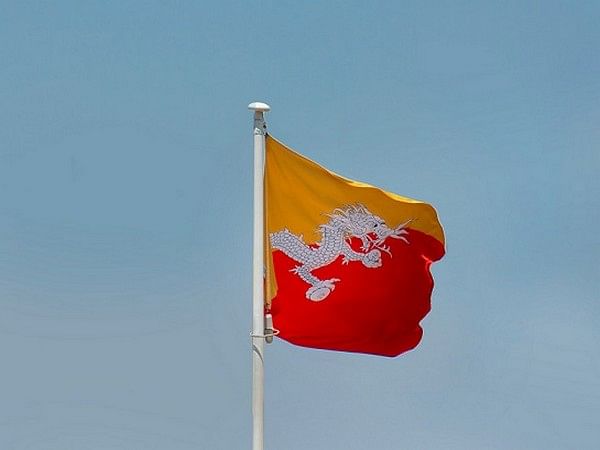Thimphu [Bhutan], February 27 (ANI): The recently unveiled Union Budget of India for Financial Year 2023-24 was closely watched by foreign policy mandarins as well as India’s aid recipient countries. Although the aid package for the upcoming fiscal year has been slashed from Rs. 6,292.30 Crore in 2022-23 to Rs. 5,408.37 Crore for 2023-24, yet the intent to boost a cooperative partnership with these countries remains with a focus on targeted interventions, Bhutan Live reported.
While the budget has been slashed for most of the countries, the aid package for Bhutan, Maldives and Latin America saw an uptick. Where for Bhutan the aid figure rose from Rs. 2,266 Crore to Rs. 2,400 Crore, for the Maldives it rose from Rs. 360 Crore to Rs. 400 Crore and for Latin American countries Rs. 40 Crore to Rs. 50 Crore.
Bhutan Live reported that Maldives is among a few countries whose budget aid has increased from Rs. 360 Crore to Rs. 400 Crore owing to New Delhi’s engagements in the Great Male Connectivity Project (GMCP) and other high-impact community development projects (HICDP).
The budget for Afghanistan, Africa and Other Developing Countries remained the same at Rs. 200 Crore, Rs. 250 Crore and Rs. 150 Crore respectively. For the development of Chabahar port in Iran, a separate allocation of 100 Crore has been earmarked, the same as it was the previous fiscal.
The continued aid to Afghanistan despite the Taliban regime still not having earned international legitimacy shows India’s concern and care for the people of Afghanistan who are facing one of the worst humanitarian crises including food and medicine shortages. India has civilisational ties with Afghans and has always come to their aid, irrespective of the political dispensation there.
As per the report by Bhutan Live, despite Iran facing international sanctions, India has not abandoned Iran. As a responsible state, India is continuing with its commitment to developing the Chabahar port which will help not only India gain access to Central Asia but will also improve Iran’s economic prospects such as through better trade and employment opportunities for local people.
For Sri Lanka, although the aid package has been slashed from Rs. 200 Crore to Rs. 150 Crore, India is already helping Sri Lanka tide over its worst economic and financial crisis since independence. India has thus far extended aid worth over $ 4 billion to help the island nation manage immediate and urgent needs such as that payment for essential commodities, medicines, fuel and food items.
India has also shown its largesse by restructuring the debt to enable Sri Lanka to get a bailout package from the IMF worth $2.9 billion.
The Bhutan Live reported that the bilateral relationship between India and Bhutan shares unique and time-tested traditionally close ties, characterized by utmost trust, goodwill and mutual understanding. Consequent to such a powerful bond, the aid package for Bhutan has also increased, despite the general cut in the budget for foreign aid. India has been Bhutan’s foremost development partner.
India has been a consistent supporter of Bhutan’s socio-economic development, best reflected in their hydropower cooperation, a sector that is the primary driver of Bhutan’s economy contributing 14% to its GDP.
India began providing aid to Bhutan for its socioeconomic development since the 1960s. Since the launch of Bhutan’s Five-Year Plans, India has been its principal development partner. The lion’s share of Bhutan’s total external grant is borne by India. For instance, for the current 12th Five-Year Plan (2018-23) of Bhutan, India’s contribution of Rs. 4,500 crore constitutes 73% of the total external grant to Bhutan.
The key areas where India provides aid to Bhutan include agriculture and irrigation development, industrial development, health, Information and Communication Technology (ICT), energy, civil aviation, human resource development, urban development, road transport, scholarship, education, culture and capacity building.
Thus, it is the whole gamut of developmental sectors where India has been supporting Bhutan’s socio-economic development through its aid contribution.
India funded Bhutan’s entire first (1961-66) and second (1967-72) Five Year Plans. Between 2000 and 2017, India has given aid amounting to USD 4.7 Billion to Bhutan. In the current Five Year Plan, i.e. 12th FYP, Indian assistance is helping Bhutan implement numerous development projects. These include 51 large and immediate projects and 359 Small Development Projects or what is known as High Impact Community Development Projects.
India is also Bhutan’s largest trade partner, accounting for about 80% of Bhutan’s overall trade. The trade figures have seen a steady rise from $484 million in 2014-15 to $1.42 billion in 2021-22. Under the ambit of the Agreement on Trade, Transit and Commerce, 1972, India allows Bhutan to carry our free trade and commerce through its territory, and vice versa. By being its largest source of FDI (~ 51% of the total FDIs to Bhutan), India supports its economic growth and sustainable development.
Hydropower is the backbone of Bhutan’s economy, and the role of India’s aid in the development of this sector is notable. For instance, the very first hydropower project in Bhutan in 1988 – the Chukha hydropower plant – was funded totally by India, of which 60% of the funding was in the form of aid. Similarly, huge aid was given by India for other hydropower projects like Kuricchu and tala projects. The current hydropower projects such as Mangdechhu and Punatsangchhu I & II also have considerable aid components from India.
The allocation of India’s foreign aid reflects India’s emphasis on its Neighbourhood First policy as well as being a responsible leading power and a voice for the Global South. Through its diversified basket of fund allocation, India has tried to induce developmental agenda across the developing and least developed countries in an equitable fashion. This sprouts from India’s belief in the noble notion of ‘Vasudhaiva Kutumbakam’ – the whole world being one family. (ANI)
This report is auto-generated from ANI news service. ThePrint holds no responsibility for its content.



